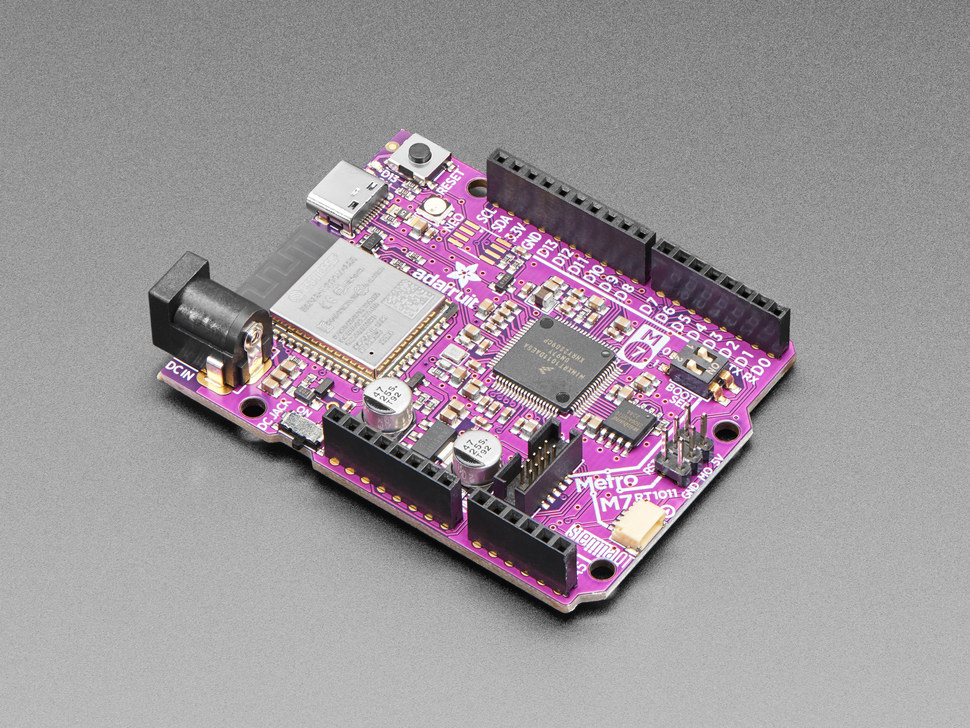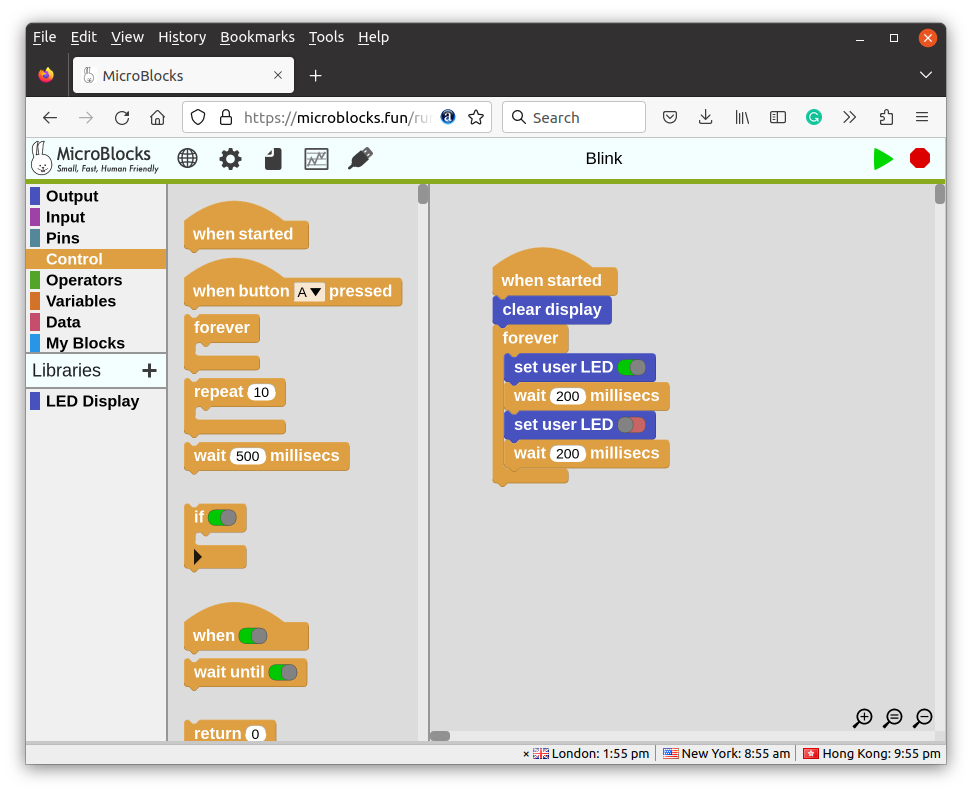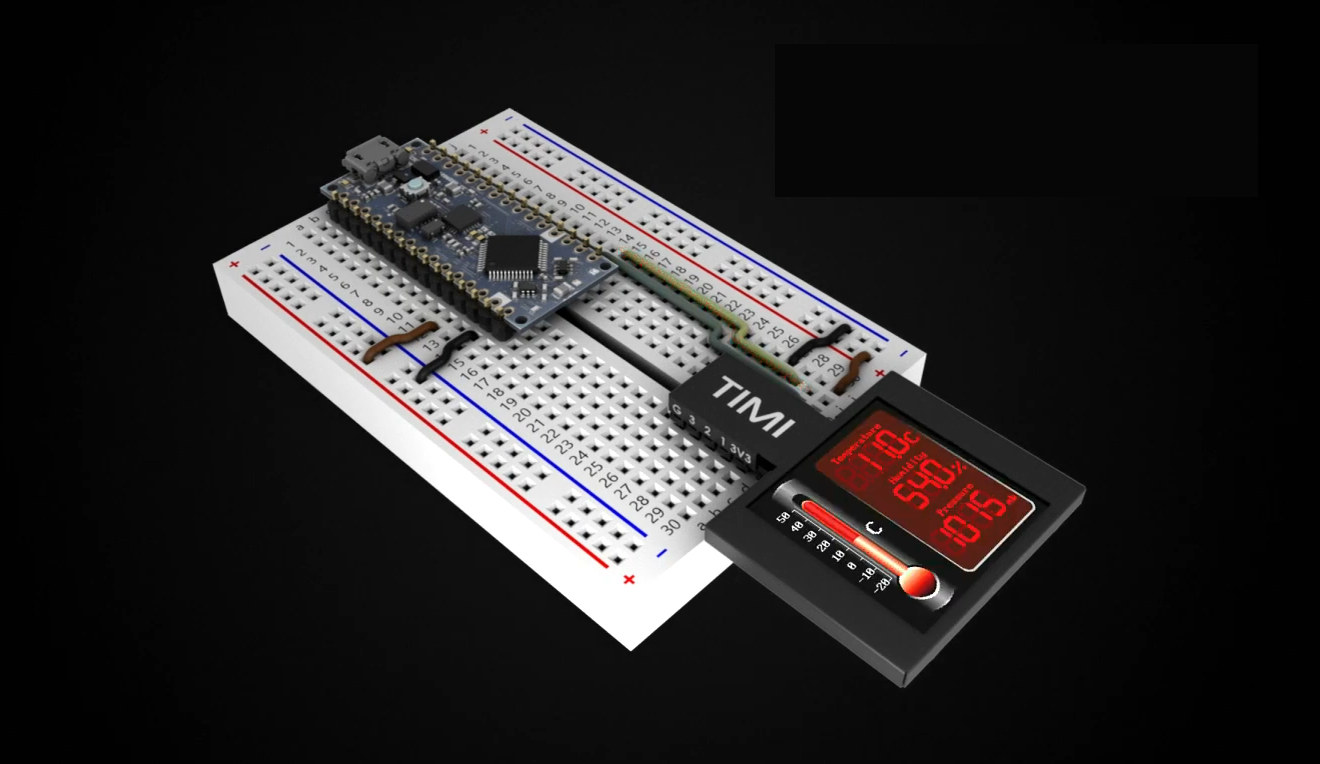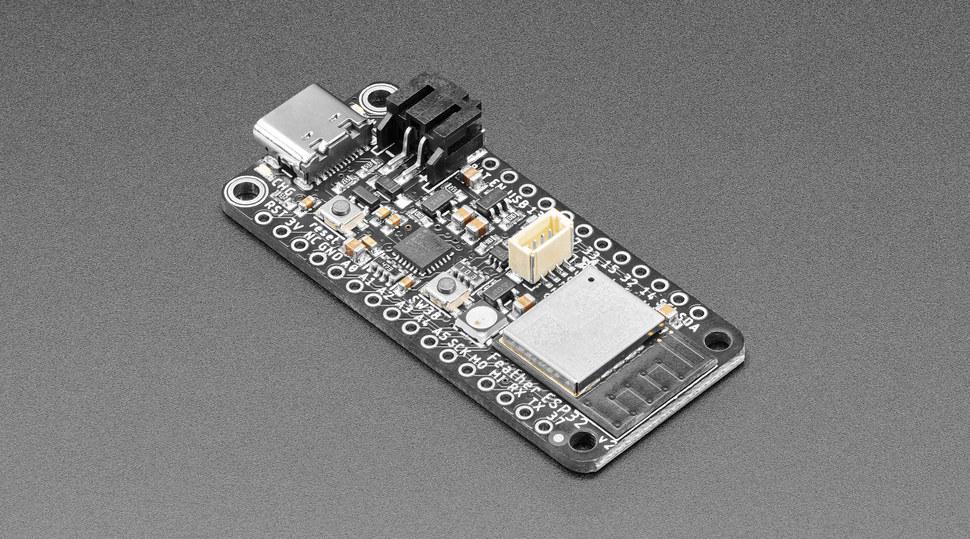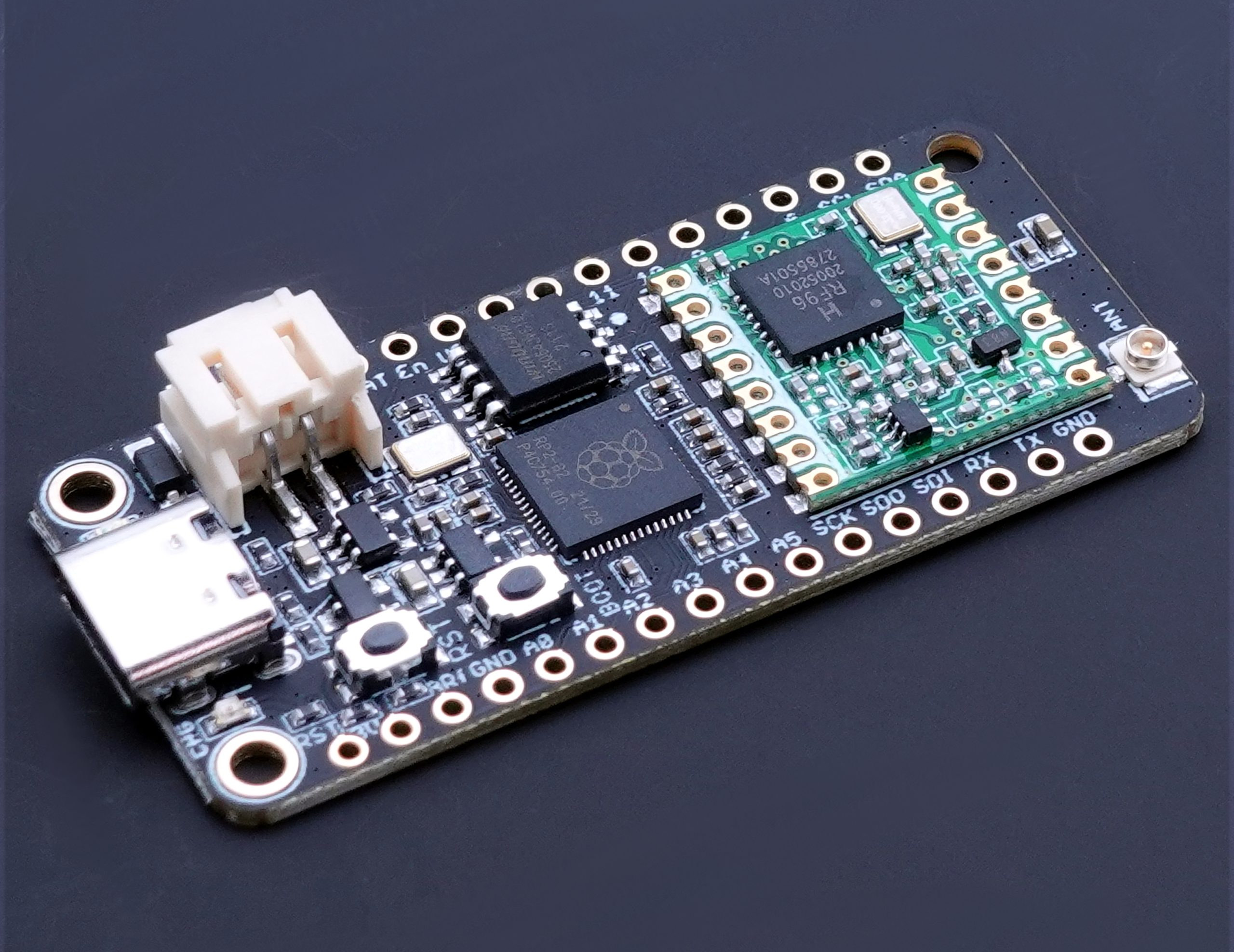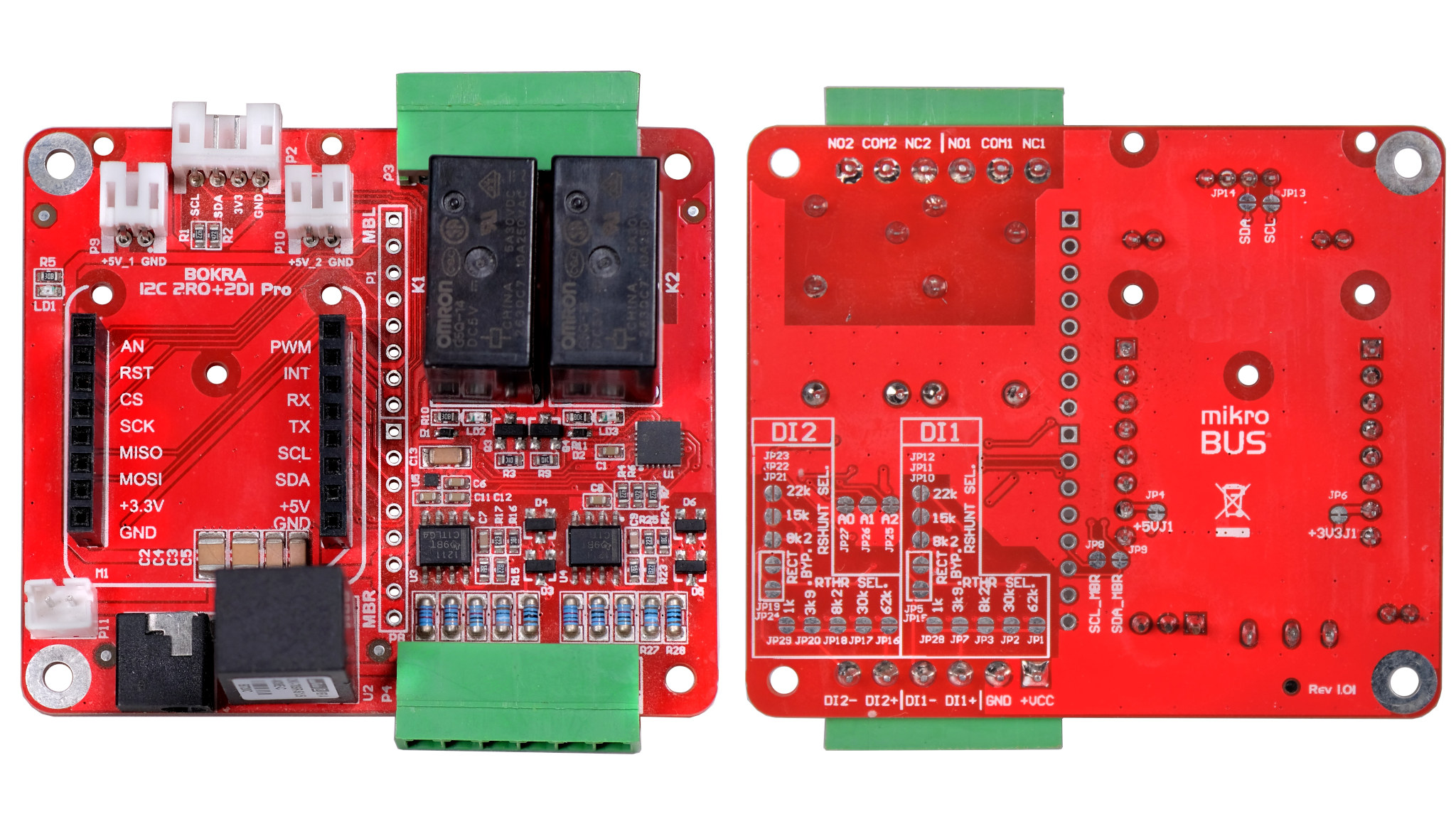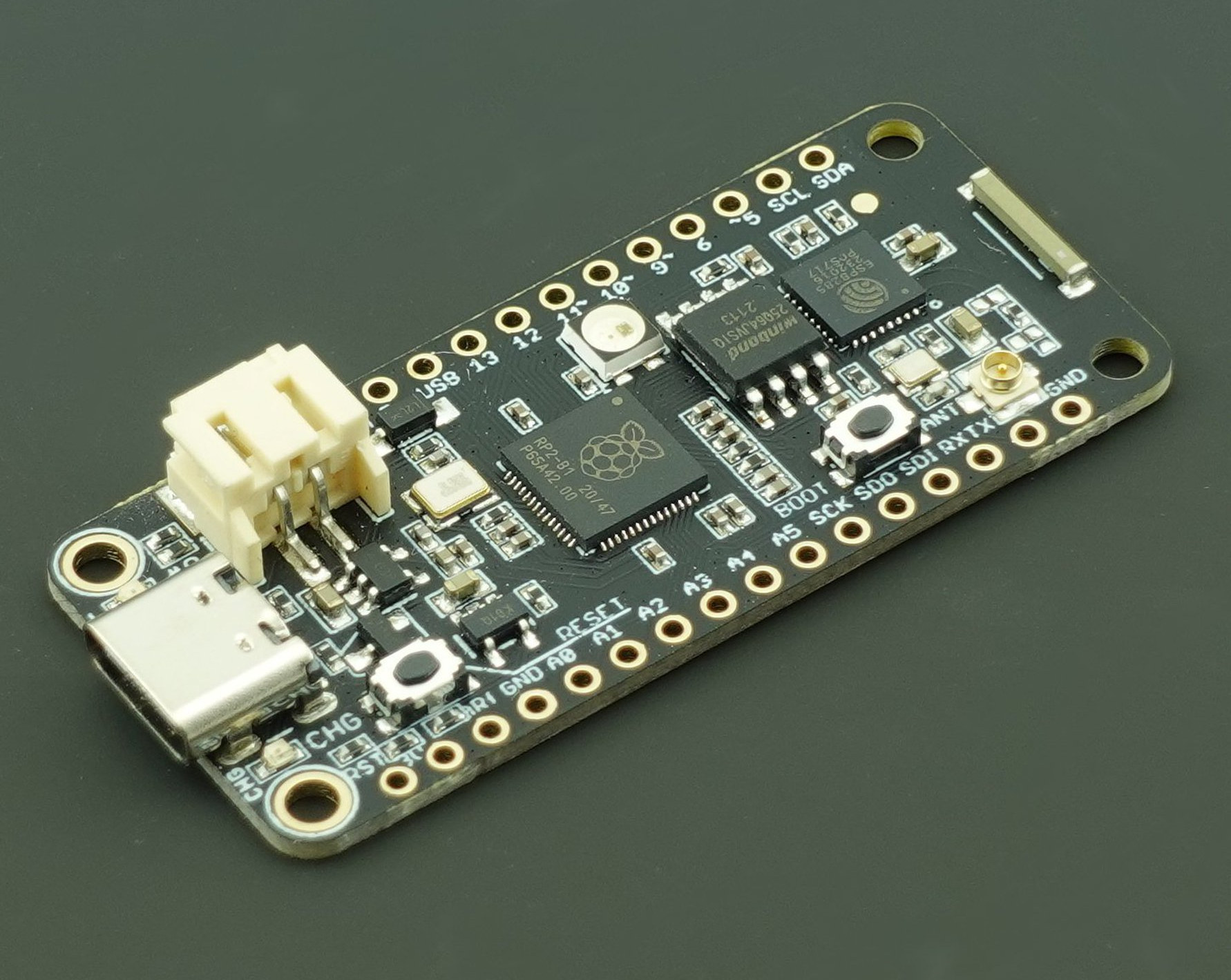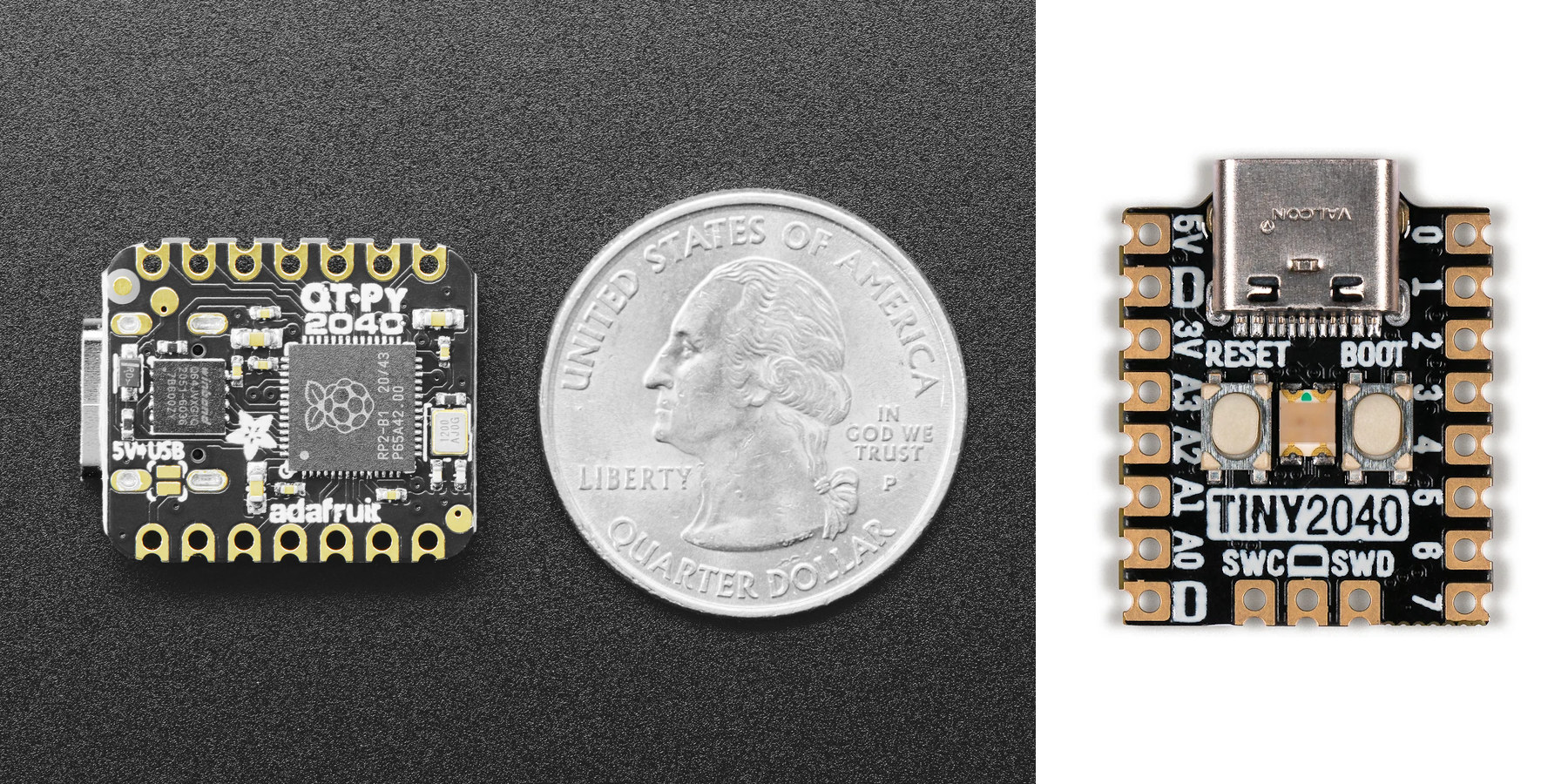Adafruit Metro M7 is a development board based on a 500 MHz NXP i.MX RT1011 Arm Cortex-M7 crossover MCU that follows Arduino UNO form factor and integrates the ESP32-based “AirLift” WiFi module for wireless connectivity. The board also comes with 4MB QSPI storage, a few LEDs and buttons, a Qwiic connector for additional expansion beyond Arduino Shields, and an SWD connector for debugging. The board takes 6V to 12V DC input via a power barrel jack, but can also be powered through its USB Type-C port. Adafruit Metro M7 specifications: SoC – NXP iMX RT1011 crossover microcontroller with an Arm Cortex-M7 clocked at 500 MHz and 128KB SRAM/TCM Storage – 4MB of QSPI XIP Flash Wireless – AirLift WiFi co-processor with TLS/SSL support (better known as ESP32-WROOM-32) USB – 1x USB Type-C port for power and programming Expansion Arduino UNO headers for Arduino shields compatibility STEMMA QT connector for I2C […]
MicroBlocks is a visual programming IDE for 32-bit microcontrollers
MicroBlocks is a visual programming IDE for 32-bit microcontrollers currently supporting the BBC Micro:bit V1/V2, Calliope mini (aka the German Micro:bit), Adafruit Circuit Playground Express and Bluefruit, Raspberry Pi Pico and Pico W, and various other boards including ESP32 and ESP8266-based boards. I discovered MicroBlocks in the list of talks for FOSDEM 2023, and although it did not make it to my virtual schedule, I thought it was interesting to look into and write about it. In their upcoming FOSDEM talk, Bernat Romagosa and Kathy Giori refer to MicroBlocks as small, fast, and human-friendly with development guided by four guiding principles: liveness, parallelism, portability, and autonomy. The IDE is inspired by Scratch, and as such, looks very similar to other visual programming interfaces I have used over the years. You can launch MicroBlocks from Google Chrome or Microsoft Edge on a PC (not a mobile device) without having to install […]
TIMI-130 – A breadboard color display with hundreds of pre-designed user interfaces
Tiny I2C, UART, or SPI displays are usually not difficult to connect to a breadboard with a few jumper cables, but Breadboard Mates TIMI-130 display makes that neater with a design made specifically for the breadboard, plus hundreds of pre-designed user interfaces/pages to simulate buttons, LED matrices, gauges, and other widgets. TIMI stands for Tiny Intelligent Modular Instrument, and TIMI-130 comes with a 1.3-inch color TFT IPS LCD, plus two 5-pin headers to power and connect the display to the breadboard through UART or I2C and update the widgets and values with simple commands. TIMI-130 specifications: Display driver – 4D Labs Pixxi-28 graphics processor with 14KB SRAM, 32KB flash Storage – 32MB flash Memory. Display – 240×240 pixel resolution TFT IPS LCD (non-touch). 2x 5-pin 2.54mm pitch headers with 3.3V (5V tolerant) serial UART interface (300 to 2187500 Baud). Master I2C (3.3V level) interface bus. 3x GPIO (3.3V level): 2x […]
Adafruit ESP32 Feather V2 ships with 8 MB Flash, 2 MB PSRAM, USB-C port, and more
Adafruit ESP32 Feather V2 (aka Huzzah32 Feather V2) is an upgrade to the company’s HUZZAH32 ESP32 Feather, still based on ESP32 WiFi & Bluetooth processor, and designed with the initial goal of replacing the obsolete CP2104 with the CP2012N USB to TLL chip. But Adafruit ended up doing a complete redesign with extra storage (8MB flash in total), 2MB PSRAM, a USB-C port replacing the Micro USB port, an extra tactile switch, an RGB LED, lower power consumption, and more. Adafruit ESP32 Feather V2 specifications: Wireless module – Espressif Systems ESP32-PICO-Mini-02 (PDF datasheet) with an ESP32 dual-core Xtensa processor @ up to 240MHz with 2.4 GHz WiFi and Bluetooth Classic/LE, 8MB flash, 2MB PSRAM, PCB antenna, FCC/CE certification. USB – USB Type-C port for power and programming via CP2102N chipset I/Os 16-pin and 12-pin GPIO headers with GPIOs, analog inputs, I2C, UART, SPI, DAC, etc… STEMMA QT connector for I2C devices, […]
Challenger RP2040 LoRa board combines Raspberry Pi RP2040 MCU with RFM95W LoRa module
Invector Labs is now offering a variant of the WiFi-based Challenger RP2040 board with a LoRa radio. The Challenger RP2040 LoRa board features the Hope RF RFM95W LoRa radio transceiver module instead of the ESP8285 WiFi chip found in the original board. Raspberry Pi RP2040 has already been used in combination with a LoRa module, notably in Rakwireless RAK11300 WisDuo LPWAN module and the “LoRa Expansion for Pico“, a baseboard for Raspberry Pi Pico equipped with a LoRa module, but it’s the first time I see the combination in a development board form factor, which as a potential bonus following Adafruit Feather form factor. Challenger RP2040 LoRa board preliminary specifications: MCU – Raspberry Pi RP2040 dual-core Cortex-M0+ MCU @ 133MHz with 264KB SRAM Storage – 8MB flash Wireless module – Hope RF RFM95W connected via SPI channel and some GPIOs 168 dB maximum link budget. +20 dBm – 100 mW […]
IoThing Digital IO board handles up to 300V for Arduino, Raspberry Pi, and various other boards (Crowdfunding)
AlterStep’s IoThing Digital is a digital I/O module with two high-power Omron G5Q-14 relays and two isolated AC or DC input channels based on Texas Instruments ISO1211 that can handle up to 300 V. The board also integrates a DC-DC converter and mikroBUS slot that allows it to be used with compatible MCU boards, and the company also provides adapters for popular form factors such as Arduino, Raspberry Pi, Adafruit Feather, Teensy, and others. IoThing Digital specifications: mikroBUS socket for mikroElektronika Click expansion boards BOKRA Lite MCU boards (Some details below) 2x Omron G5Q-14 SPDT relays – 3A/30V DC or 3A/250VAC via terminal blocks Terminal block for 2x digital outputs configurable from 9V to 300V, DC and AC PCF8574 8-bit I/O expander chip with I²C bus for relay control and digital signal input I2C interface with support for 100 KHz and 400 KHz, address selection via jumpers Grove I2C connector […]
Challenger RP2040 WiFi board marries ESP8285 with Raspberry Pi RP2040
We’ve already seen Raspberry Pi RP2040 getting WiFi connectivity with boards like Pico Wireless Pack, Wio RP2040 mini, and Arduino Nano RP2040 Connect in ways that do not always make technical and commercial sense as in many cases, the WiFi microcontroller (e.g. ESP32) is more powerful than the Raspberry Pi microcontroller. But Invector Labs’ Challenger RP2040 WiFi board does make more sense, as the company combines Raspberry Pi RP2040 dual-core Cortex-M0+ MCU with an entry-level ESP8285 WiFi microcontroller, and also offers LiPo battery support, all that in the Adafruit Feather form factor. Challenger RP2040 WiFi board specifications: Main microcontroller – Raspberry Pi RP2040 dual-core Cortex-M0+ MCU @ 133MHz with 264KB SRAM Storage – 8MB flash Network microcontroller – Espressif ESP8285 2.4GHz WiFi 4 SoC with 1MB on-chip flash pre-flashed with Espressif’s AT command interpreter, connected to the main MCU over UART at up to 921600 bps; I/Os via Adafruit Feather […]
The Tiniest Raspberry Pi RP2040 Boards – Tiny 2040 & Adafruit QT Py RP2040
The Raspberry Pi Pico officially board for RP2040 MCU has a lot of free space on the PCB. So when third parties made their own board they either added features like camera, display, and sensors as found on like on Arducam Pico4ML board, while others “cut the fat” to the minimum. Some of the tiniest Raspberry Pi RP2040 boards are Pimoroni Tiny 2040 & Adafruit QT Py RP2040, both of which come with the dual-core Cortex-M0+ MCU, a USB-C port, two buttons, some I/O ports, and not much else. Tiny 2040 Pimoroni Tiny 2040 specifications: MCU – Raspberry Pi RP2040 dual-core Cortex-M0+ microcontroller@ up to 133Mhz with 264kB of SRAM Storage – 8MB QSPI flash USB – USB Type-C port for power, data, and programming I/Os – 2x 8-pin castellated and through holes for 12 I/Os pins including 4x analog inputs, SPI, I2C, UART, 5V, 3.3V, and GND Debugging – […]


